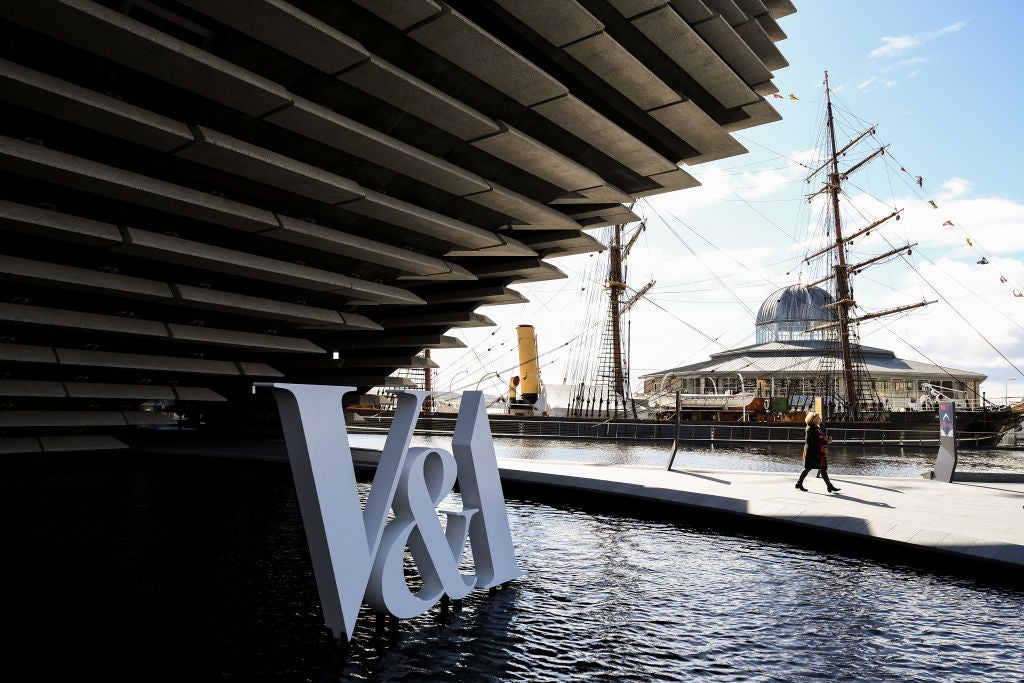

On the east coast of Scotland on the River Tay, Dundee – known as ‘the city of discovery’ – has been quietly reinventing itself over the past decade. With a £1.1bn investment in its waterfront development, an ambitious renewable energy plan, and universities pumping out impressive talent pools and research and development projects, Dundee is sending out a clear message to investors.
Dundee is no stranger to reinvention, however. Originally, the city’s industry was famed for ‘the three Js’ of jute, jam and journalism. In the early 1900s, Dundee was nicknamed ‘Juteopolis’, before its jute industry lost ground to India and suffered a period of decline before the Second World War. Its jam industry, while much smaller than that of jute, suffered a similar decline.
Dundee’s Dandy past
Out of Dundee’s ‘three Js’ journalism prevails, largely through publishing house DC Thomson, which is responsible for the Beano and Dandy comics, which have provided iconic characters such as Dennis the Menace, Desperate Dan and the Bash Street Kids. Like its home city, family owned DC Thomson has also had to reinvent itself over the years, principally through launching new titles, acquiring businesses and adapting its appeal to digital native generations.
Perhaps not as widely known as the three Js or the Beano is the fact that Winston Churchill served as MP for Dundee between 1908 and 1922. There was no love lost between the city and political giant, however, with Churchill’s quote of “I will see the grass grow green over the industrial wasteland of Dundee” still enjoying a degree of infamy among its citizens.
Some claim that Churchill could never quite come to terms with the bluntness of Dundonians. Councillor John Alexander, the leader of Dundee City Council, agrees that Dundee’s natives are honest, for better or for worse. “If you approached a Dundonian on the street and asked them if your bum looked big, they would tell you that it does,” he says. “That is the kind of folk Dundonians are.”
Dundonians have also had to watch as oil and gas wealth flowed into Aberdeen further along Scotland’s east coast, passing Dundee by completely, and then witness the city’s Timex plant close following a series of strikes in the 1990s. Such setbacks act as motivations for Alexander.
How well do you really know your competitors?
Access the most comprehensive Company Profiles on the market, powered by GlobalData. Save hours of research. Gain competitive edge.

Thank you!
Your download email will arrive shortly
Not ready to buy yet? Download a free sample
We are confident about the unique quality of our Company Profiles. However, we want you to make the most beneficial decision for your business, so we offer a free sample that you can download by submitting the below form
By GlobalData“I still hear people talking about Timex and the impact that had on the city, 30 years on,” he says. “There is a feeling here that my predecessors messed up the chance. I will never do that to Dundee, I will never miss an opportunity and not join a discussion that could benefit the city’s future.”
A city of design and developments
Dundee was made an official Unesco ‘City of Design’ in 2014, joining just 40 others in the world including Detroit, Dubai, Toronto and Seoul. A report published by World Heritage in June 2020 stated that Unesco projects within the UK will generate an estimated £151m in financial benefits to the country each year, which will be felt by local communities.
On the back of this momentum, Dundee’s ambitious £1.1bn waterfront development has spearheaded the city’s regeneration, creating about 7,000 jobs. The project is split into five separate sites each serving specific purposes including residential, office and leisure spaces and industry zones for digital media, manufacturing, renewables and creative industries.
Arguably the crown jewel in this development has been the opening of the Victoria and Albert (V&A) design museum, the only one of its kind outside of London. The V&A has committed to providing Dundee with world-class exhibits across a 20-year period and is expected to attract about 300,000 visitors to the city each year.
Alexander believes these renovations are long overdue. “The waterfront is Dundee’s focal point and it has been transformed beyond recognition.” he says. “We have seen the demolition of Dundee’s most hated building, Tayside House, which was a 14-storey office block featuring some grotesque 1960s architecture. We have torn down the old Hilton Hotel, the Olympia swimming pool and we have realigned the most significant roads coming off the Tay Road Bridge. This has been a huge amount of work and now after the demolition… we are putting the heart back into the waterfront.”
Pre-Covid-19, these developments had provided a huge boost for Dundee’s tourism sector, which in turn benefited the wider region, according to Alexander.
“We had a record-breaking year in 2019 in terms of tourism numbers,” he says. “It was a huge boost for the local economy. Not only did we see people going through the doors of the V&A and the Discovery Point tourist attraction, we had people going to the shops, the city centre and the areas surrounding Dundee.”
Dundee’s tourism offering received another boost when the Eden Project named the city as a proposed location for a new site. The original Eden Project in Cornwall is billed as ‘the largest indoor rainforest in the world’ and attracts approximately one million visitors a year. If the project does go ahead, the site could open in Dundee as early as 2024.
Playing the investment game
Video games are also a big part of Dundee’s creative legacy with legendary titles such as Grand Theft Auto, Minecraft and Lemmings all being coded in the city. The University of Abertay in central Dundee was the first in the world to offer a degree in computer game technology, and is largely credited for the city’s stellar reputation in the sector.
The city is also home to the UK’s largest independent mobile developer, Outplay, and 4J studios, which notably converted Minecraft for play on console devices. Furthermore, the UK Games Fund – a non-profit funding delivery body – is based in Dundee and was granted £1m in the chancellor’s 2020 spending review, giving the group funding through to the end of 2022.
Dundee City Council is working with businesses on a multi-million-pound investment plan for an innovative e-sports arena. The plans have seen Northern Lights Arena Europe sign an 18-month exclusivity deal with the council.
A student stronghold
Dundee has the youthful population that many investors crave, with 25–44-year-olds forming the city’s largest age group in 2019. In contrast, the 75 and overs formed the smallest group. It also has the highest ratio in Scotland for student to population ratios (1:5), with its population standing at about 150,000 and the city playing host to two universities.
According to data from the Higher Education Student Association (HESA), Dundee attracts mostly first-time students with 189,245 undergraduates between 2018 and 2019. The figures also show that Dundee holds a strong appeal to foreign students, with 18.66% of students that enrolled in both Dundee universities in 2018 and 2019 coming from outside of the UK.
Alexander highlights this diversity as a key driving point for Dundee. “We are bringing people from all walks of life, with different backgrounds, from all parts of the world into Dundee, which is quite small and compact – it is 24 square miles,” he says. “Dundee is a melting pot of ideas and innovation.”
HESA’s data also shows that medical and life sciences are by far the most studied subjects in Dundee. In fact, the University of Dundee was ranked fifth in Octopus Ventures’ 2020 Spinning out Success report, which evaluates the success of university business spin-outs. The report stated that Dundee showed particular strength in medical and computer sciences.
Arguably the most successful spin-out for the University of Dundee is Exscientia, which was founded in 2012 and is widely considered a world leader in AI-powered drug discovery. The company successfully raised $60m in a series C round of funding in 2020.
Michelin switches back to Dundee
When the Michelin tyre factory closed down in Dundee in June 2020, about 850 jobs were lost. Dundee City Council has since worked to turn this negative into a positive, and now the site on which the factory stood will receive a £60m injection from the Scottish government to repurpose itself into the Michelin Scotland Innovation Parc (MSIP).
The MSIP will set out to take advantage of Dundee’s skilled academic population, and will focus on areas such as low-carbon energy and sustainable mobility. Alexander believes that this is an exciting development for Dundee and a huge vote of confidence in the future of the city. “Michelin – which has a 50% stake in this project – is a blue-chip global organisation that is the gold standard of mobility,” he says.
Alexander highlights that Michelin is a leader in hydrogen fuel, which could bring vast opportunities for Dundee. “The site already has two turbines and directly next door there is a £100m waste-to-energy facility under development,” he says. “We have the unique ability to produce hydrogen on site.”
Furthermore, Dundee also benefits from a multi-million-pound funding stream through Transport Scotland which, in connection with the ‘Joint Initiative for Hydrogen Vehicles across Europe 2’ project, will see the city setting an example in clean travel. Dundee is set to put into operation 12 fuel cell buses.
Dundee is also the current favourite location to host a new AMTE Power gigaplant, according to company director Kevin Brundish. This would be just the second of its kind in the UK, along with Thurso on Scotland’s northern coast. An energy company, AMTE, is working with the UK government to boost the manufacturing of battery packs for electric vehicles. In the long-term, the site could create up to 300 jobs in Dundee. This, alongside the electric buses and turbines at the MSIP park, gives hope that Dundee is poised to become a leader in the renewable energy sector.
Reinventing Dundee’s economy
Dundee is positioning itself towards a future based around sciences, creative and digital media, renewable energy and tourism, but there are still reputational issues to overcome.
The city was named ‘the European drug death capital’ in 2018, and ONS figures show that human health and social work activities typically hold the largest percentage of regional gross value added, although this slightly decreased between 2017 and 2018. This could be linked to efforts made by Dundee City Council to tackle the city’s socio-economic problems.
More positively, professional, scientific and technical activities have seen a significant increase in regional GVA over the past decade, according to ONS figures, from £93m in capital expenditure in 2008 to £217m in 2018. Foreign direct investment (FDI) figures in Dundee had experienced a dip between 2018 and 2019, from five projects to three, according to EY’s May 2020 Attractiveness Survey Scotland.
Despite such prevalent social issues and the dip in FDI projects, the mood in Dundee remains one of optimism. Alexander asks would-be investors to focus on the numbers, saying: “Look at the growth, look at our tourism sector, look at the increase of house sales, the value of residential properties, look at the accolades and attention the city has received over the past three years. All of this points to Dundee being a great place to do business.”
For more of Investment Monitor’s coverage of the UK’s cities, read through our Future of British Cities series:
- Aberdeen
- Belfast
- Birmingham
- Bradford-Leeds
- Brighton
- Bristol
- Cardiff
- Coventry
- Dundee
- Edinburgh
- The East Midlands
- Glasgow
- Hull
- Kent
- Liverpool
- Manchester
- Newcastle and the North East
- Norwich
- Plymouth
- Portsmouth
- Reading
- Sheffield
- Southampton
- Stoke-on-Trent
- Swansea
- Wolverhampton






